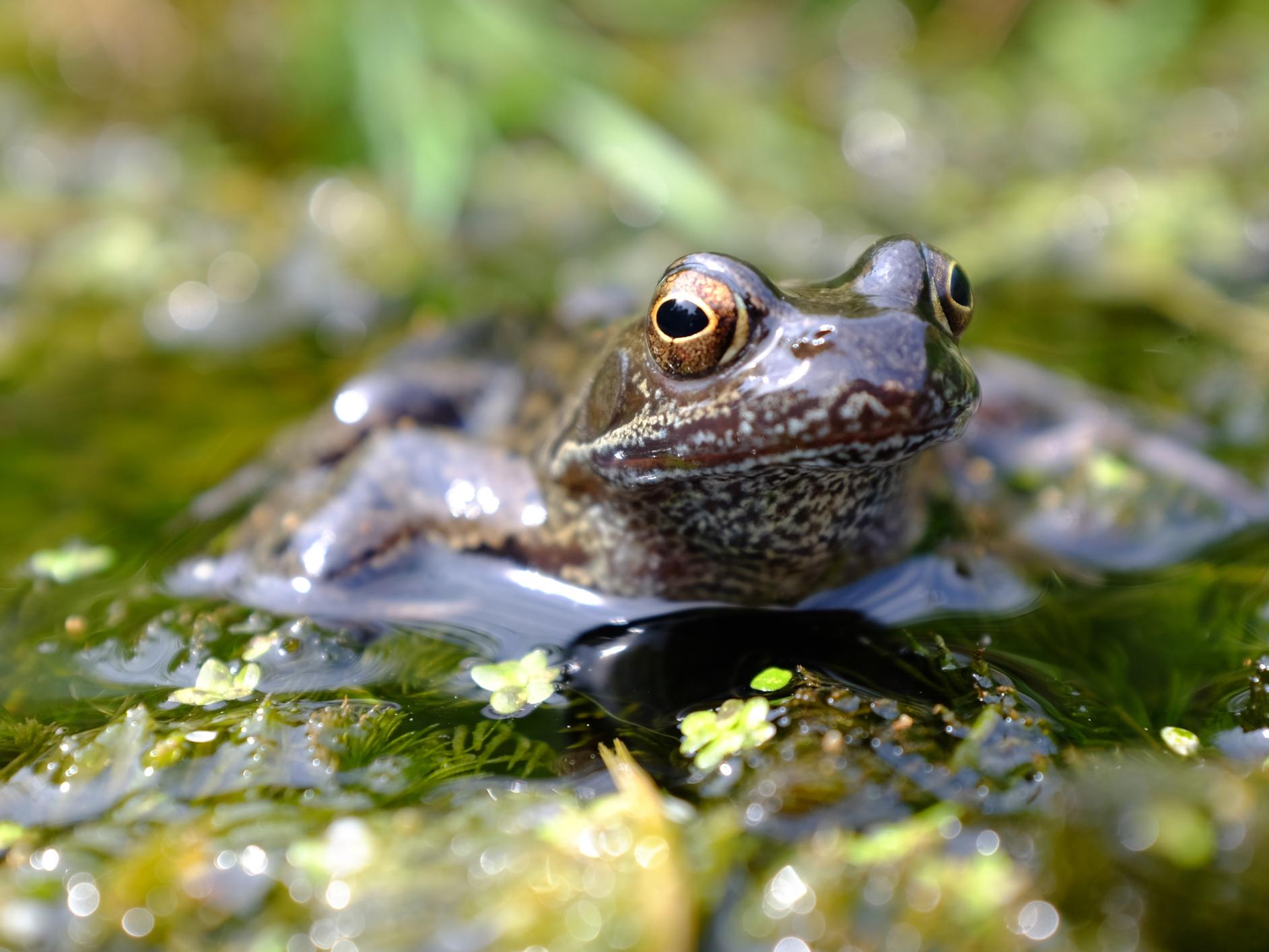Pesticides could wipe out frogs by turning them female, study finds
Chemicals harm amphibians by disrupting hormone production and could contribute to downward spiral of many species

A widely used pesticide could be placing frog populations in danger by diminishing their ability to reproduce properly.
Not only does exposure to the chemical linuron – a potato herbicide – reduce male frog fertility, it skews the sex ratios of growing tadpoles significantly towards females.
As frog populations are already under global threat of extinction, scientists are concerned that disrupting their natural reproduction could further hasten their decline.
The devastation pesticides have caused to insect populations has been well documented, with German scientists warning of an “ecological Armageddon” when they found numbers had plummeted by 75 per cent in the country’s nature reserves.
Knock-on effects further up the food chain are thought to be behind the disappearance of many bird species from the European countryside.
But pesticides can have toxic effects on other animals too, and there has been a distinct lack of research into their effects on amphibians such as frogs, toads and newts.
To improve this situation, ecotoxicologist Dr Cecilia Berg of the University of Uppsala and a team of Swedish and British researchers set out to investigate the effects of linuron in the West African clawed frog.
A common lab species, the clawed frogs were followed through their entire life cycle in Uppsala’s environmental toxicology lab.
The scientists exposed tadpoles to concentrations of the pesticide similar to those that have been measured in natural environments.
They found that the tadpoles grew ovaries substantially more than they grew testicles, an effect the team attributed to the endocrine disrupting – or hormone disrupting – properties of linuron, which could hinder production of testosterone.
After following the frogs through the adulthood, the researchers found that once they had developed fully the male frogs exposed to the chemicals as tadpoles were less fertile and had certain feminine characteristics.
"The results show that pesticides with this mechanism of action can cause permanent damage, such as reduced fertility in frogs exposed at the tadpole stage,” said Dr Berg. “This supports previous research showing that endocrine-disrupting substances in the environment may negatively impact amphibians.”
Scientists are concerned that chemicals leaching from farmland into ponds where amphibians lay their eggs could tamper with the reproduction of wild populations.
While linuron is not licensed for use in the UK – or in Sweden where the study was carried out – it is widely used in other parts of the European Union (EU) and North America.
The results of the study will therefore be crucial in shaping future policy decisions about pesticides in the EU and beyond.
“The European Commission is currently taking several measures to improve pesticide risk assessment,” said Dr Berg. “A new report from the European Food Safety Authority (Efsa), for instance, points to the need to assess the risks of pesticide use to amphibians – something that isn't being done today.”
In April the EU voted for a permanent ban on three pesticides after Efsa ruled that they posed a significant threat to wild bees and honeybees.
With global animal diversity on a downward trajectory, amphibians have already been hit particularly hard, and the additional pressure of widespread pesticide use could add to their burden.
Scientists think around 40 per cent of amphibian species are endangered, with habitat loss, climate change and pollution all taking their toll on these vulnerable animals.
The “amphibian plague” caused by the highly contagious chytrid fungus has added to this decline, tearing across global populations and eradicating over 100 species.
Join our commenting forum
Join thought-provoking conversations, follow other Independent readers and see their replies
Comments
Bookmark popover
Removed from bookmarks